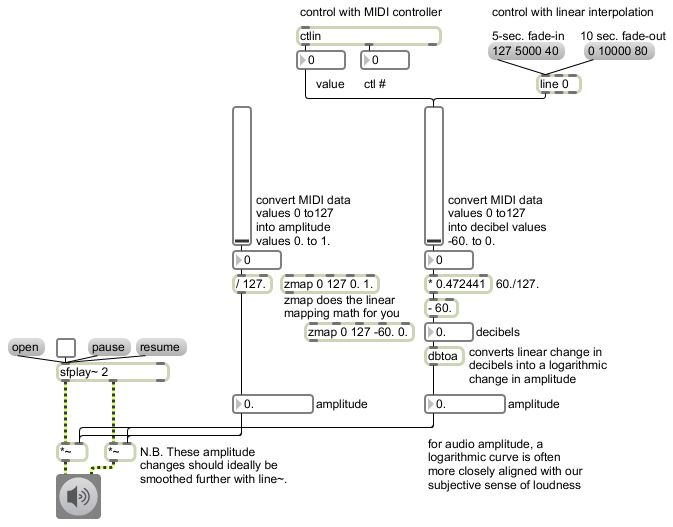Data from a MIDI continuous controller (such as a mod wheel or a volume pedal), and/or from a Max slider object, can be used to control the amplitude of an audio signal. First the data is mapped into the appropriate range (e.g., 0 to 1), then it is used as a multiplier for the audio signal.
Note that to be truly correct, the data should go to a line~ object to interpolate sample-by-sample to the new amplitude over a very small amount of time (say, 20-50 ms or so) before going to the *~ objects. That step is omitted from this program just to simplify. You can see an example of this use of line~ in the example from April 5, 2006 called “Simple audio file player”.
Linear mapping can be achieved by a multiplication to resize the range and an addition to offset the range. The zmap object (shown but not used) can do this for you. Linear interpolation over a period of time can be achieved by using the line object for Max messages (as shown in the upper right corner) or the line~ object for audio signals (not shown in this example).
To read more about linear interpolation and linear mapping, see also Dobrian’s blog chapters on linear change and fading my means of interpolation.

